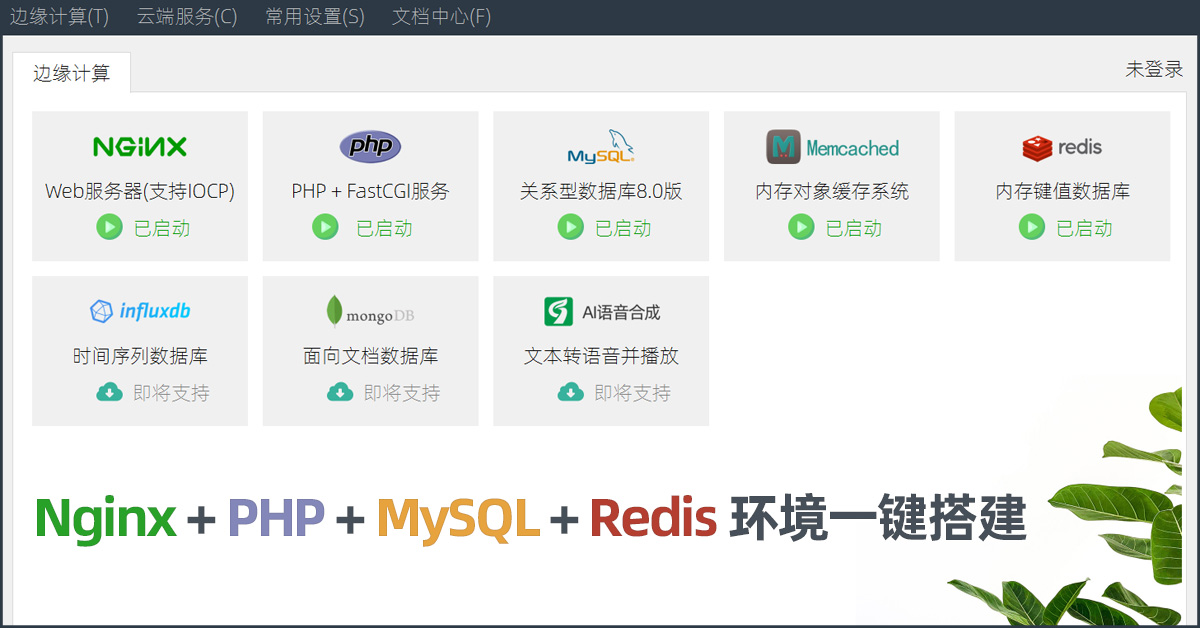[文章作者:张宴 本文版本:v1.0 最后修改:2009.04.13 转载请注明原文链接:http://blog.zyan.cc/post/409/]
上周五,我们基于开源Flash Server:Red5(http://osflash.org/red5)的Flash流媒体服务平台上线,内容涉及视频上传、视频分发、调用接口、Flash播放器等。
一、Flash RTMP流媒体播放演示(播放时进度条可以自由拖动):
生产环境更多 Flash RTMP 流媒体视频演示:http://jx3.xoyo.com/xgxz/video/
二、安装步骤简要说明:
①、安装JDK
打开http://java.sun.com/javase/downloads/,下载最新的Java SE Development Kit (JDK),安装在/usr/local/jdk/下。
②、安装Red5
打开http://osflash.org/red5/070final,下载red5-0.7.0.tar.gz,解压缩后执行./red5.sh,然后访问http://yourdomain:5080/,有演示。
三、服务器带宽消耗比较:
①、客户端 1.5M ADSL 环境,HTTP 方式播放单个视频,服务器所消耗的带宽:
②、客户端 1.5M ADSL 环境,RTMP 流媒体方式播放单个视频,服务器所消耗的带宽:
HTTP 方式播放,如果服务器端不限速,客户端的带宽越大,服务器消耗的带宽也越大,但限速又会影响用户体验;
RTMP 流媒体方式播放,只要客户端达到最低带宽要求,不管客户端的带宽如何,服务器消耗的带宽都一样。
如果播放10M以内大小的视频,HTTP 能够在较短的时间内下载完视频,能够降低并发观看用户数;
如果播放10M以上大小的视频,RTMP 要比 HTTP 方式节省不少带宽。
RTMP 播放时进度条可以自由拖动,虽然Lighttpd和Nginx目前也可以使用somevideo.flv?start=xxx的方式从指定位置下载视频,但还是不如 RTMP 灵活。
四、带宽测试Shell脚本(net.sh):


上周五,我们基于开源Flash Server:Red5(http://osflash.org/red5)的Flash流媒体服务平台上线,内容涉及视频上传、视频分发、调用接口、Flash播放器等。
一、Flash RTMP流媒体播放演示(播放时进度条可以自由拖动):
生产环境更多 Flash RTMP 流媒体视频演示:http://jx3.xoyo.com/xgxz/video/
二、安装步骤简要说明:
①、安装JDK
打开http://java.sun.com/javase/downloads/,下载最新的Java SE Development Kit (JDK),安装在/usr/local/jdk/下。
chmod +x jdk-6u13-linux-i586.bin
./jdk-6u13-linux-i586.bin
./jdk-6u13-linux-i586.bin
②、安装Red5
打开http://osflash.org/red5/070final,下载red5-0.7.0.tar.gz,解压缩后执行./red5.sh,然后访问http://yourdomain:5080/,有演示。
三、服务器带宽消耗比较:
①、客户端 1.5M ADSL 环境,HTTP 方式播放单个视频,服务器所消耗的带宽:
[root@localhost ~]# ./net.sh eth0 1
IN: 3318 Byte/s OUT: 259984 Byte/s
IN: 3486 Byte/s OUT: 249470 Byte/s
IN: 3332 Byte/s OUT: 259984 Byte/s
IN: 3090 Byte/s OUT: 252528 Byte/s
IN: 3000 Byte/s OUT: 252474 Byte/s
IN: 3000 Byte/s OUT: 253976 Byte/s
IN: 2940 Byte/s OUT: 255478 Byte/s
IN: 3004 Byte/s OUT: 252474 Byte/s
IN: 3452 Byte/s OUT: 252528 Byte/s
IN: 3270 Byte/s OUT: 260038 Byte/s
IN: 3586 Byte/s OUT: 252474 Byte/s
IN: 3318 Byte/s OUT: 259984 Byte/s
IN: 3486 Byte/s OUT: 249470 Byte/s
IN: 3332 Byte/s OUT: 259984 Byte/s
IN: 3090 Byte/s OUT: 252528 Byte/s
IN: 3000 Byte/s OUT: 252474 Byte/s
IN: 3000 Byte/s OUT: 253976 Byte/s
IN: 2940 Byte/s OUT: 255478 Byte/s
IN: 3004 Byte/s OUT: 252474 Byte/s
IN: 3452 Byte/s OUT: 252528 Byte/s
IN: 3270 Byte/s OUT: 260038 Byte/s
IN: 3586 Byte/s OUT: 252474 Byte/s
②、客户端 1.5M ADSL 环境,RTMP 流媒体方式播放单个视频,服务器所消耗的带宽:
[root@localhost ~]# ./net.sh eth0 1
IN: 3900 Byte/s OUT: 27878 Byte/s
IN: 4200 Byte/s OUT: 30868 Byte/s
IN: 4380 Byte/s OUT: 27801 Byte/s
IN: 4080 Byte/s OUT: 29965 Byte/s
IN: 4080 Byte/s OUT: 26450 Byte/s
IN: 3960 Byte/s OUT: 27143 Byte/s
IN: 3000 Byte/s OUT: 10061 Byte/s
IN: 3960 Byte/s OUT: 16166 Byte/s
IN: 3660 Byte/s OUT: 26480 Byte/s
IN: 4020 Byte/s OUT: 23127 Byte/s
IN: 3900 Byte/s OUT: 27878 Byte/s
IN: 4200 Byte/s OUT: 30868 Byte/s
IN: 4380 Byte/s OUT: 27801 Byte/s
IN: 4080 Byte/s OUT: 29965 Byte/s
IN: 4080 Byte/s OUT: 26450 Byte/s
IN: 3960 Byte/s OUT: 27143 Byte/s
IN: 3000 Byte/s OUT: 10061 Byte/s
IN: 3960 Byte/s OUT: 16166 Byte/s
IN: 3660 Byte/s OUT: 26480 Byte/s
IN: 4020 Byte/s OUT: 23127 Byte/s
HTTP 方式播放,如果服务器端不限速,客户端的带宽越大,服务器消耗的带宽也越大,但限速又会影响用户体验;
RTMP 流媒体方式播放,只要客户端达到最低带宽要求,不管客户端的带宽如何,服务器消耗的带宽都一样。
如果播放10M以内大小的视频,HTTP 能够在较短的时间内下载完视频,能够降低并发观看用户数;
如果播放10M以上大小的视频,RTMP 要比 HTTP 方式节省不少带宽。
RTMP 播放时进度条可以自由拖动,虽然Lighttpd和Nginx目前也可以使用somevideo.flv?start=xxx的方式从指定位置下载视频,但还是不如 RTMP 灵活。
四、带宽测试Shell脚本(net.sh):
#!/bin/bash
# test network width
function usage
{
echo "Usage: $0 "
echo " e.g. $0 eth0 2"
exit 65
}
if [ $# -lt 2 ];then
usage
fi
typeset in in_old dif_in
typeset out out_old dif_out
typeset timer
typeset eth
eth=$1
timer=$2
in_old=$(cat /proc/net/dev | grep $eth | sed -e "s/\(.*\)\:\(.*\)/\2/g" | awk ' { print $1 }' )
out_old=$(cat /proc/net/dev | grep $eth | sed -e "s/\(.*\)\:\(.*\)/\2/g" | awk ' { print $9 }' )
while true
do
sleep ${timer}
in=$(cat /proc/net/dev | grep $eth | sed -e "s/\(.*\)\:\(.*\)/\2/g" | awk ' { print $1 }' )
out=$(cat /proc/net/dev | grep $eth | sed -e "s/\(.*\)\:\(.*\)/\2/g" | awk ' { print $9 }' )
dif_in=$(((in-in_old)/timer))
dif_out=$(((out-out_old)/timer))
echo "IN: ${dif_in} Byte/s OUT: ${dif_out} Byte/s"
in_old=${in}
out_old=${out}
done
exit 0
# test network width
function usage
{
echo "Usage: $0 "
echo " e.g. $0 eth0 2"
exit 65
}
if [ $# -lt 2 ];then
usage
fi
typeset in in_old dif_in
typeset out out_old dif_out
typeset timer
typeset eth
eth=$1
timer=$2
in_old=$(cat /proc/net/dev | grep $eth | sed -e "s/\(.*\)\:\(.*\)/\2/g" | awk ' { print $1 }' )
out_old=$(cat /proc/net/dev | grep $eth | sed -e "s/\(.*\)\:\(.*\)/\2/g" | awk ' { print $9 }' )
while true
do
sleep ${timer}
in=$(cat /proc/net/dev | grep $eth | sed -e "s/\(.*\)\:\(.*\)/\2/g" | awk ' { print $1 }' )
out=$(cat /proc/net/dev | grep $eth | sed -e "s/\(.*\)\:\(.*\)/\2/g" | awk ' { print $9 }' )
dif_in=$(((in-in_old)/timer))
dif_out=$(((out-out_old)/timer))
echo "IN: ${dif_in} Byte/s OUT: ${dif_out} Byte/s"
in_old=${in}
out_old=${out}
done
exit 0


 Google 构建大规模信息检索系统中的挑战
Google 构建大规模信息检索系统中的挑战 珠海金山软件之行[原创]
珠海金山软件之行[原创]


 2009-4-13 23:13 | by
2009-4-13 23:13 | by 























视频直播的一般用的是什么服务器软件?
http://www.uggshere.com
http://jordan-sales.com
图书批发
我刚接触这块,还一直以为有进度条在pause时可以缓存的都是HTTP方式播放的呢,以前一直以为如果RTMP方式的是不会有进度条缓存的,好像FMS实现了smart pause能有一定的缓存,red5不支持。
能给解释下不?在下在这里谢谢了。
所以你现在看到的Demo是HTTP的,而非RTMP。
这样说来RTMP方式是不可以在pause状态下缓存了(除了FMS smartpause机制),前后拖动都会刷新缓存区重新load,这样的话必然影响客户收看体验。另一方面,按照您上面的阐述,HTTP方式播放会影响服务短效率,不知道你在这个问题上是怎么考虑的。采用什么样的手段回避这些问题。谢谢!
1)目前,Red5服务器 如何读取stream视频文件服务器的文件,是否有相关方法可循。(red5和视频文件位于不同服务器上)
2)在使用falsh播放器时,播放器,暴露了服务器rmtp://servername.com/ 或者 http://servername.com/ ,这个问题是不是很严重,可能会导致什么问题呢?
期待阁下回答。
看了你写的red5教程,刚好我们也需要,装好自带的oflaDemo组件,rtmp连接后播放页面可以正常播放但没有视频进度条无法看到拖拽效果,按照你说的方式下载了mediaplayer-5.7-viral(jw-flv-player),仿照着更改了下flowplayer.html文件内容
改成http方式播放可以
flowplayer("player", "flowplayer-3.0.3.swf", {
clip: {
url: 'http://192.168.91.131:5080/flv/video.flv',
provider: 'h264streaming'
},
-----------------------------
但改成rtmp方式不可以播放
flowplayer("player", "flowplayer-3.0.3.swf", {
clip: {
url: 'rtmp://192.168.91.131/oflaDemo/video.flv',
provider: 'h264streaming'
},
找了个flvPlayer.exe播放软件也无法实现拖拽播放,请问如何实现,第一次尝试用,还请指点,谢谢
QQ:6562157
e-mail:fzhy163@163.com
应用环境
redhat4.6 .32
jdk-6u13-linux-i586.bin
red5-1.0.0-RC1.zip
tiffanys
gucci uk
louis vuitton sac